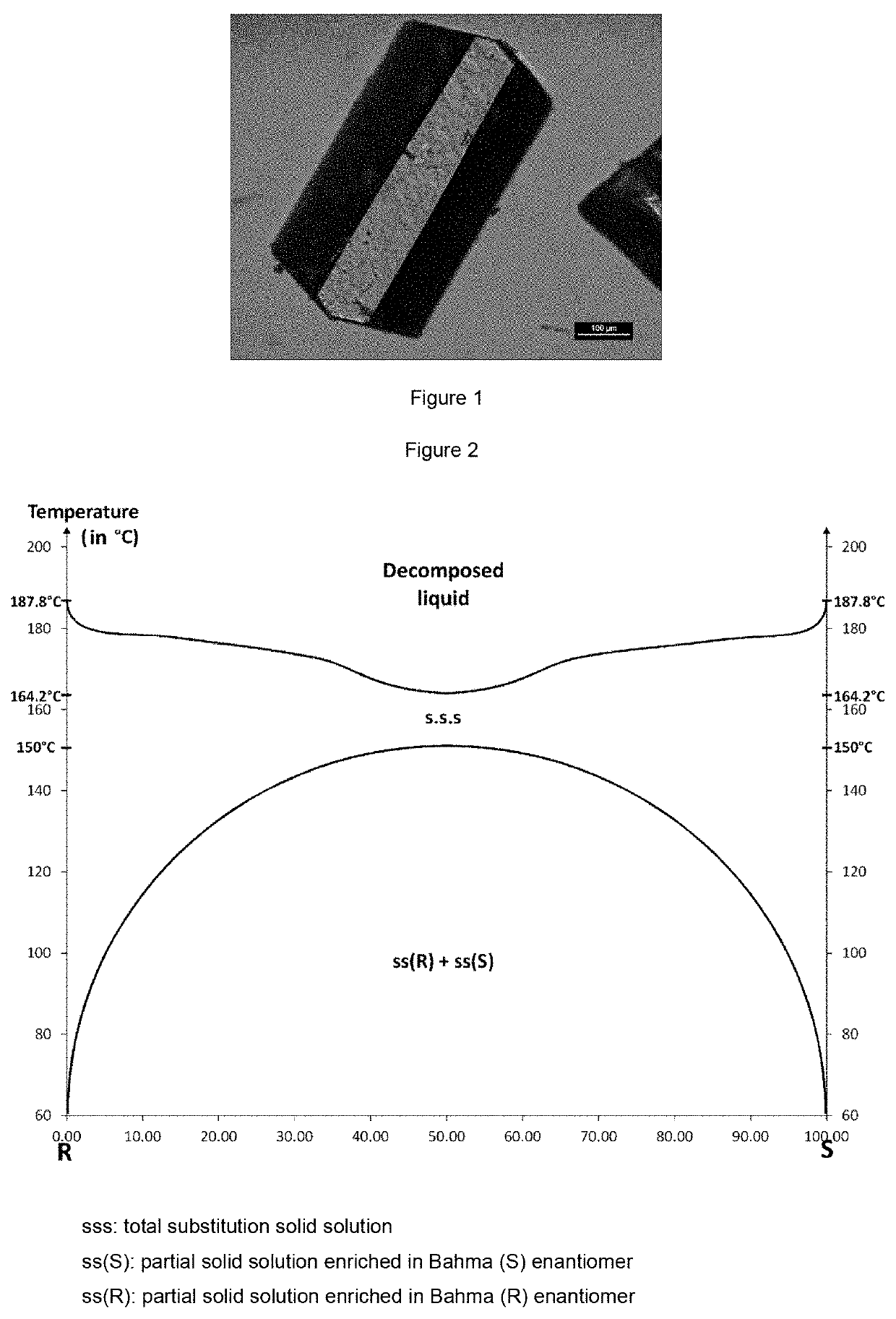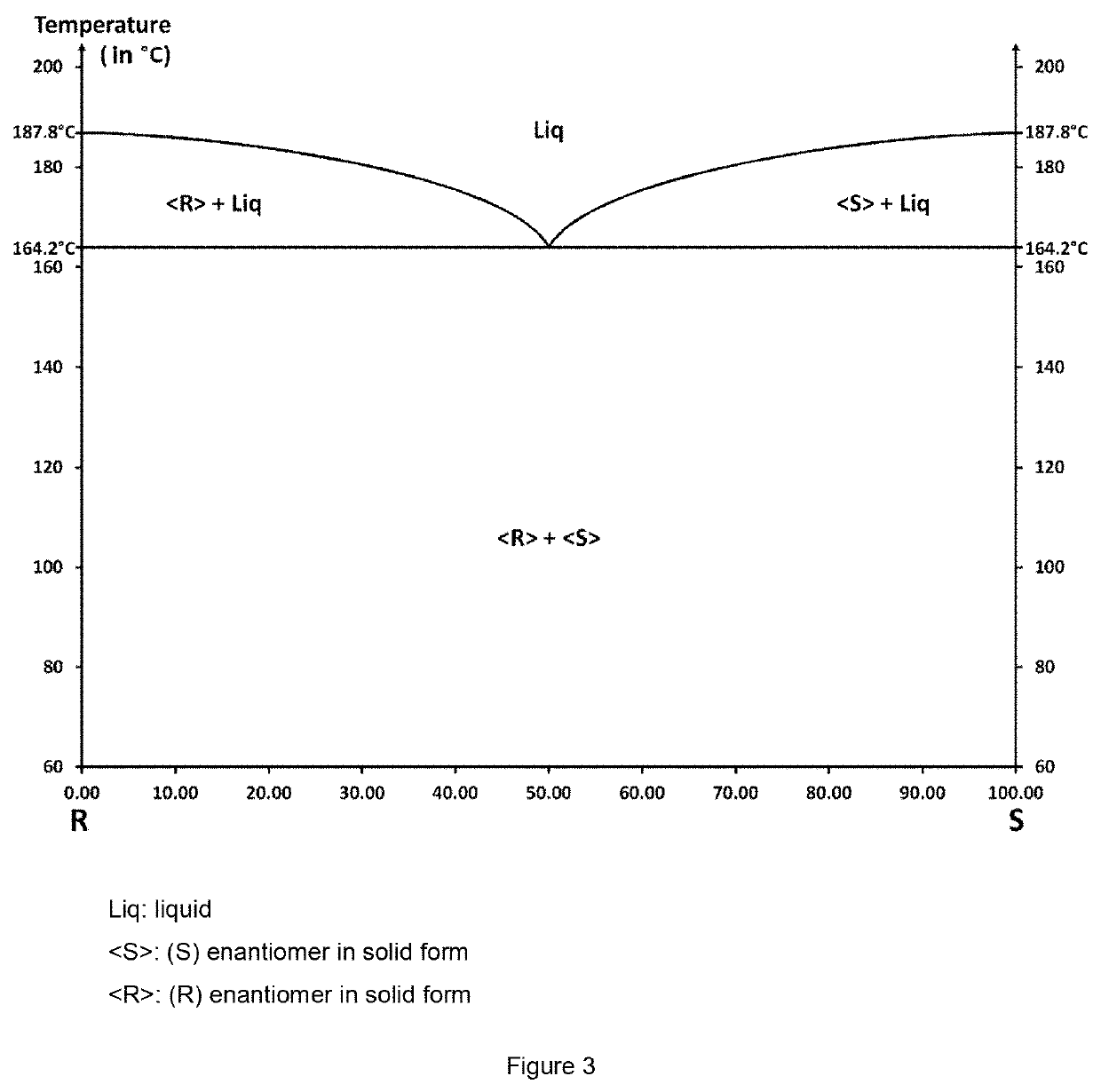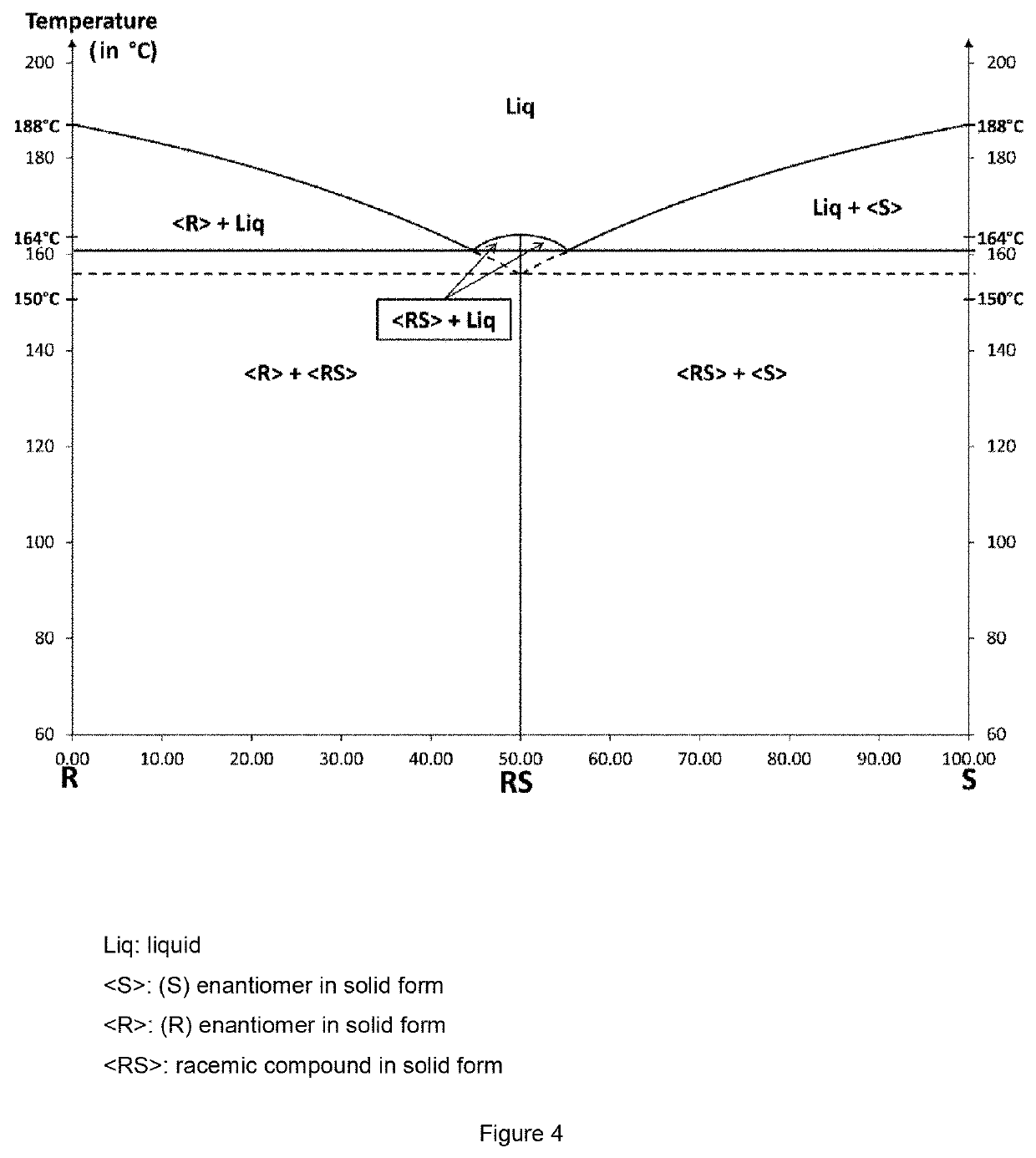Method for Resolution of Baclofen Salts
a technology of baclofen salt and solution method, which is applied in the field of chiral compounds, can solve the problems of high cost of reagents, difficult industrial implementation, and low final yield of r()-baclofen
- Summary
- Abstract
- Description
- Claims
- Application Information
AI Technical Summary
Benefits of technology
Problems solved by technology
Method used
Image
Examples
example 1
on and Characterization of Bahma Salts
[0162]The Bahma salts (racemic or enantiomerically pure) used in the process of the present invention were prepared by evaporation of a suspension of baclofen (racemic or enantiomerically pure) and of maleic acid (1:1 stoichiometric mixture) in acetone.
[0163]The single crystals of Bahma salt for the x-ray diffraction analysis were obtained by dissolving 50 mg of racemic Bahma salt in a given volume of solvent: water, methanol or water / n-propanol azeotrope (to achieve a homogeneous solution, the mixture may be heated). After dissolution of the solids, a temperature may be imposed on the solution or it is left at room temperature (about 20° C.). The salt crystals highly enriched in Bahma form by evaporation of the solvent or solvent mixture after a few days for the slowest evaporations; single crystals were thus obtained by evaporation of solutions left at 20, 50 and 70° C.
[0164]These single crystals were studied by x-ray diffraction to determine ...
example 2
n in the n-Propanol / Water Azeotropic Mixture by Auto-Seeded Preferential Crystallization
[0169]The solubility of the racemic Bahma salt at various temperatures was determined in the n-propanol / water azeotropic mixture (ρ=0.870 g·mL−1). The calculated values are presented in the table below.
TemperatureSolubility20° C.1.49%35° C.2.80%50° C.4.81%
[0170]Several entrainments were performed in this solvent using a saturated racemic solution at 50° C. and following the experimental device described previously.[0171]1st Series:
Initial system: 40 mL saturated at 50° C. (1.7583 g ofrac. Bahma in 34.796 g of solvent) and 0.2505 g of Bahma-100% eeCrude harvestsTemperatureTimeSolutionMassee(° C.)(min)ee (%)(g)(%)Test 1530−4.71506−4.444516−0.4040264.54353611.69 32.54115.30304619.920.6682 g−91.08Compensation 0.6895 g of rac. Bahma and4 h at 53° C.2 mL of solventTest 25306.433536−9.893046−18.080.6587 g+84.29Compensation 0.6718 g of rac. Bahma and12 h at 53° C.2 mL of solventTest 3530−5.473536−3.3730...
example 3
n in Acidified Water by Auto-Seeded Preferential Crystallization
[0173]The solubility of the racemic Bahma salt at various temperatures was determined in pure water (ρ=1 g·mL−1), in aqueous 1M HCl solution (ρ=1.017 g·mL−1) and in aqueous 2M HCl solution (ρ=1.030 g·mL−1). The calculated values are presented in the table below.
SolubilitySolubilitySolubilityTemperatureWater1M HCl2M HCl20° C.0.75%4.51%6.48%35° C.1.00%6.86%11.44%50° C.1.78%12.54%22.24%
[0174]Thus, the use of an acidified aqueous solution advantageously makes it possible to increase the solubility of the racemic Bahma salt, which makes it possible to improve the productivity of the preferential crystallization. For HCl concentrations of 1M and 2M at these temperatures, the solid phases do not contain any hydrochloride.
[0175]Entrainment was performed in 1M HCl using a saturated racemic solution at 50° C. and following the experimental device described previously.
Initial system: 40 mL saturated at 50° C. (5.8326 g ofrac. Bahm...
PUM
| Property | Measurement | Unit |
|---|---|---|
| melting/decomposition point | aaaaa | aaaaa |
| temperature TL | aaaaa | aaaaa |
| temperature TL | aaaaa | aaaaa |
Abstract
Description
Claims
Application Information
 Login to View More
Login to View More - R&D
- Intellectual Property
- Life Sciences
- Materials
- Tech Scout
- Unparalleled Data Quality
- Higher Quality Content
- 60% Fewer Hallucinations
Browse by: Latest US Patents, China's latest patents, Technical Efficacy Thesaurus, Application Domain, Technology Topic, Popular Technical Reports.
© 2025 PatSnap. All rights reserved.Legal|Privacy policy|Modern Slavery Act Transparency Statement|Sitemap|About US| Contact US: help@patsnap.com



